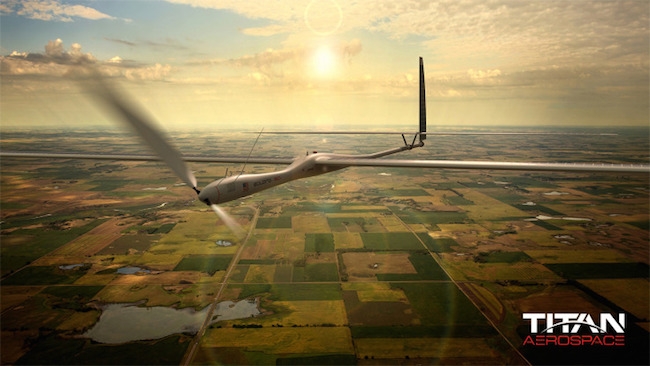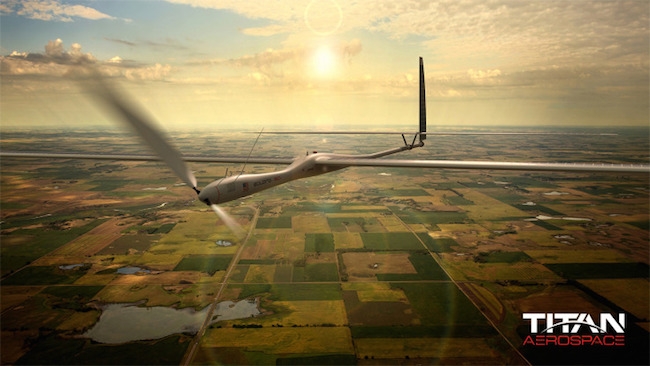

Or a Google one, as the two internet giants now seem to be going head to head when it comes to aerospace acquisitions. The goal? To be the gatekeepers of a genuinely global internet.
Google has just acquired Titan Aerospace, a drone startup planning to make high-altitude aircraft that can stay aloft at 65,000 feet for years at a time on solar power. Facebook was originally interested in buying the company, but chose instead to buy the UK firm Ascenta, whose planned products do the same thing.
These are just the latest moves in the companies' goals to expand internet availability (and thus their markets) to the two thirds of the population that doesn't yet have it. Last year Facebook and other tech companies launched Internet.org, a global partnership whose slogan is “Everyone of us. Everywhere. Connected.” which either sounds admirably altruistic or excessively creepy, much of which depends on your stance on Facebook.
Either way Mark Zuckerberg confirmed long-held speculation at his launch of the Facebook Connectivity lab last month that the company was actively looking at deploying drone aircraft to connect the world. They will use Free-space optical communication (FSO) which relies on lasers operating in the infrared spectrum to boost the speed of internet connections above and beyond what has currently been achieved.
“Our team has many of the world's leading experts in aerospace and communications technology, including [those] from NASA's Jet Propulsion Lab and Ames Research Center,” he wrote. “Today we are also bringing on key members of the team from Ascenta, a small UK-based company whose founders created early versions of Zephyr, which became the world’s longest flying solar-powered unmanned aircraft. They will join our team working on connectivity aircraft.”
Different approaches
The company is looking at different approaches for different geographies: the high-altitude drones are planned for suburban areas in limited geographical regions, where they can stay aloft for months at extreme altitudes above normal air traffic (plus, handily, most of the weather). For lower population density areas, meanwhile, it plans to rely on the existing technology of using low-Earth orbit and geosynchronous satellites to beam internet access to the ground.
Both systems plan to use FSO, which will probably mean some new satellites. You get the feeling that money is not a huge issue here...
While all this sounds a bit more high-tech than Google’s Project Loon (subtitle: Balloon powered internet for everyone), which uses helium filled balloons floating up in the stratosphere to pull off roughly the same trick, Loon has at least already undertaken a fairly large scale trial on New Zealand’s South Island. This is being expanded over the course of this year to encompass what the project hopes will be a ring of uninterrupted connectivity around the 40th southern parallel, the balloons rising or descending into the winds below to travel round the globe.
Tags: Technology


Comments